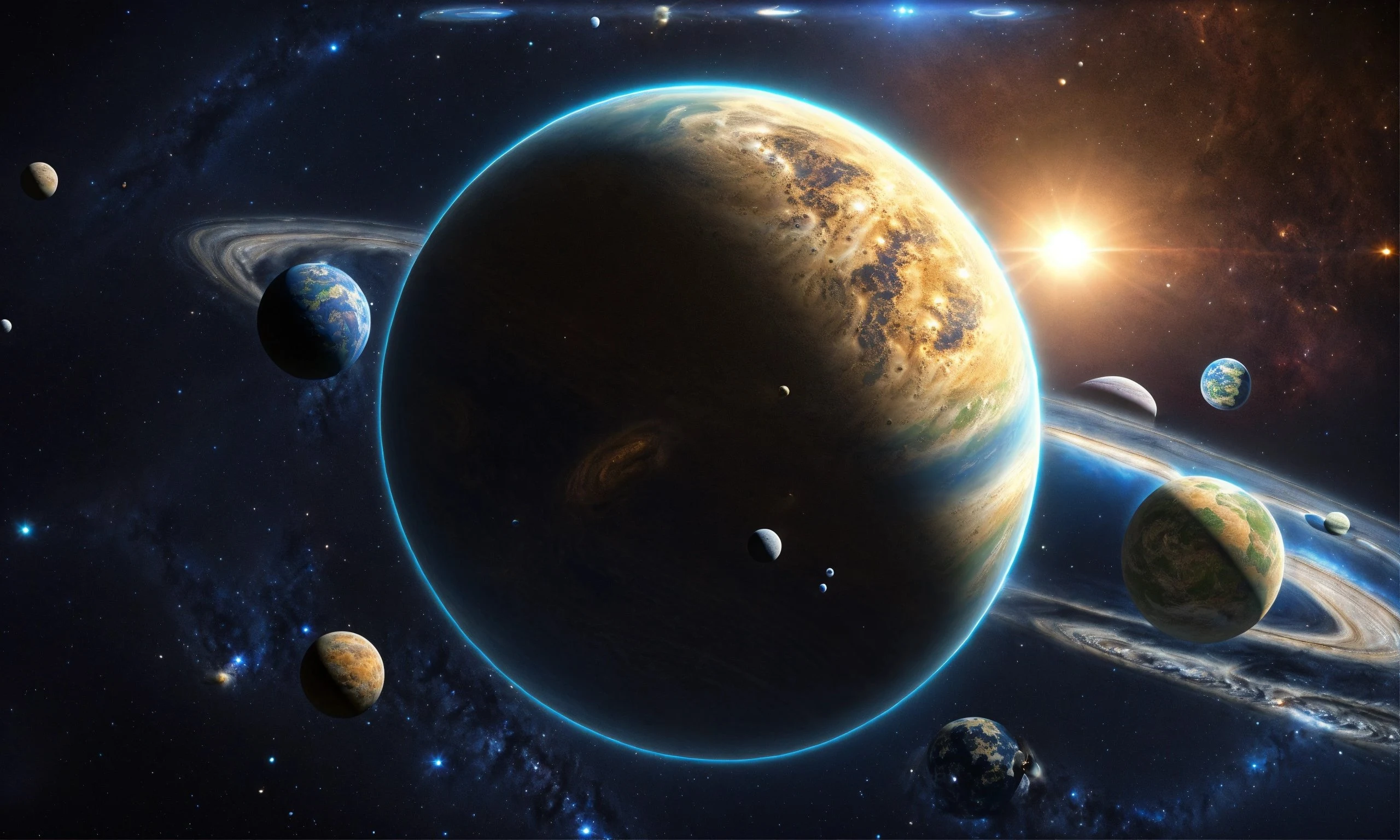In our solar system, Uranus is the seventh planet from the Sun. It is a gas giant with an unusual characteristic: it rolls along its orbit due to its rotational axis being nearly entirely slanted laterally.
Uranus's unique look and dramatic seasonal variations result from this. The presence of methane in its atmosphere gives it a blue-green hue.
Titania and Miranda are two of Uranus's larger moons. The planet has many moons and a ring system. The planet is far away and freezing, with extremely low temperatures that make it uninhabitable for human exploration.
Let's Explore 50 Amazing Facts About Uranus
The seventh planet from the Sun is Uranus.
English cosmologist Sir William Herschel, who was brought into the world in Germany, made the revelation in 1781.
The main other planet named after the god of the sky, Uranus, is from Greek folklore.
It has a special rotational pivot, shifted at around 98 degrees, making it practically its ally.
Because of this, outrageous slant, Uranus encounters outrageous seasons, with each shaft pointing toward the Sun for around 21 years.
Also Read: Top 50 Interesting Facts about Planet Venus
Since the planet, is generally made of frosty substances like water, smelling salts, and methane, it is habitually alluded to as an "ice Goliath."
Because of its prevalent synthesis of cold components like water, smelling salts, and methane, the planet is regularly alluded to as an "ice monster."
Uranus' thin, dark rings are comprised of fewer, stony pieces.
Uranus is circled by 27 known normal satellites or moons.
The biggest moon, Titania, is the eighth-biggest moon in the planetary group.
Also Read: Top 30 Motivational Facts About Jackie Chan
Mount Everest-like bluffs are among the unmistakable surface elements of Miranda, one more moon of Uranus.
Uranus takes around 84 Earth years to finish one circle around the Sun.
A day on Uranus is more limited than a day on the planet, enduring just around 17.24 hours.
The environment of Uranus is fundamentally made out of hydrogen, helium, and methane.
Uranus' blue-green tint is created by methane in the climate.
Also Read: Top 30 Amazing Facts About Number 9 That Will Blow Your Mind
The sole space apparatus to visit Uranus is Explorer 2, which made a flyby in 1986.
The attractive field of Uranus is shifted at a 60-degree point to its rotational pivot.
The planetary climate of Uranus is the coldest in the nearby planet group, with lows of - 224 degrees Celsius (371 degrees Fahrenheit).
Uranus' pivotal slant might have come about because of a crash with an enormous item in its far-off past.
Since Uranus is imperceptible to the independent eye, it's conceivable that early stargazers saw it without understanding it to be a planet.
Also Read: Top 50 Amazing And Unique Facts About Planet Mars
The separation from the Sun to Uranus fluctuates as the two planets circle in circular ways.
Herschel and Neptune were two different names that were proposed during the underlying discussion about the name Uranus.
Among the four gas glass in our planetary group are Jupiter, Saturn, Neptune, and this one.
There are presently thirteen rings around Uranus after the Explorer 2 rockets was viewed as two more.
Uranus has a weak and unpredictable attractive field, contrasted with the more characterized fields of different gas Goliaths.
Also Read: Top 5 AI Video Editing Tools to Simplify Your Work
One justification for why Uranus is less iridescent than different gas monsters is that it comes up short on a significant interior intensity source.
Uranus is the third-biggest planet in our nearby planet group, after Jupiter and Saturn.
It has an extremely low thickness, demonstrating a lot of water ice during its creation.
Uranus' pivot slant is oftentimes compared to moving a ball on its side while it is turning.
The name Uranus is derived from the Greek divinity Ouranos, signifying "sky" or "paradise."
Also Read: Top 50 Interesting Facts About Earth to Remind You Why It's Amazing
The climate of Uranus contains follow measures of hydrocarbons, adding to its remarkable shading.
The ring arrangement of Uranus is slim, dark, and comprised of incomplete, tight rings.
Water ice and perhaps some dim substance make up the ring particles.
The Explorer 2 mission gave significant data about Uranus, including attributes of its moons, rings, and air.
Uranus' attractive field deviated because of its huge counterbalance from the planet's middle.
Also Read: 30 Interesting Facts About Virat Kohli
Uranus' pointing attractive field adds to its dynamic and various magnetospheres.
A couple of Uranus' moons bear names of fictitious people made by Alexander Pope and William Shakespeare.
Occasional changes in Uranus' radio emanations are brought about by its unpredictably molded magnetosphere.
Uranus is a remarkable object of exploration in planetary science due to its extreme hub slant.
It needs a telescope to notice Uranus since it isn't noticeable to the independent eye.
Also Read: Top 30 Fun And Amazing Facts About Rohit Sharma
Because of its faintness, Uranus was avoided from authentic galactic perceptions.
The air of Uranus has cloud structures looking like groups, as seen on Jupiter and Saturn.
The Explorer 2 rockets uncovered a shockingly featureless surface of Uranus.
Contrasted with different gas Goliaths, Uranus' environmental elements are compelled by the shortfall of inside heat sources.
Because of its pivotal, Uranus encounters a polar leveling, which brings about a little crushing at the shafts.
Also Read: Top 30 Interesting Facts About The James Webb Space Telescope
There is little probability of human investigation on Uranus soon because of its incredibly low temperatures.
There are five significant rings of Uranus, the most brilliant of which is known as the Epsilon Ring.
Since Uranu's needs included, laying out its rotational period was first troublesome.
As per a few specialists, Uranus could have a frigid layer enclosing a hot, rough center.
At the point when Uranus passed before a star during a heavenly occultation, which brought about a brief diminishing of the light, the rings were first noticed.
Also Read: Top 30 Interesting Facts About Cryptographic Mathematics That Will Shocked You
Posted By F A C T O L O G Y
"Factology " is a Fact Blog. Here you can find all kinds of facts and blogging-related content My name is Mihir Patel and I am a passionate blogger. Blogging has been my creative outlet for several years now, and I love the freedom it gives me to express myself and share my ideas with the world. Through my blog, I write about a wide range of topics that interest me, including technology, science, and space.
Tags: Planet Facts




